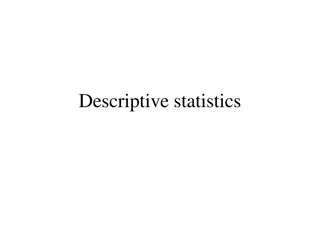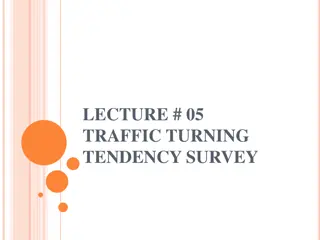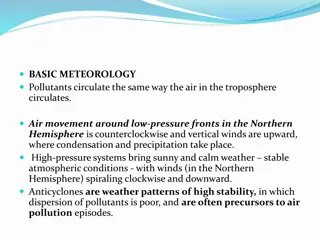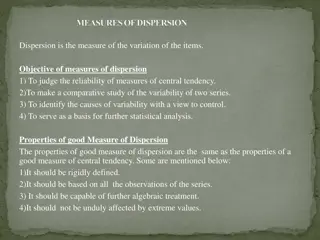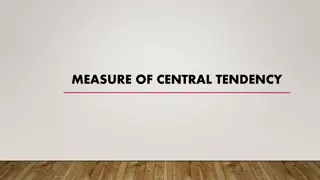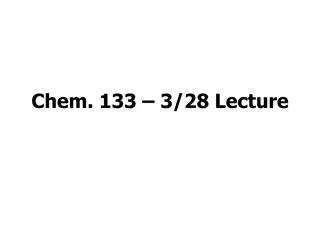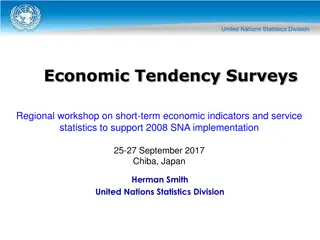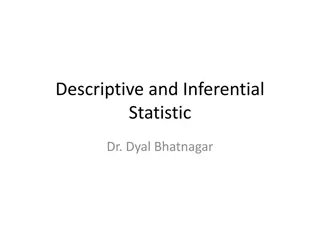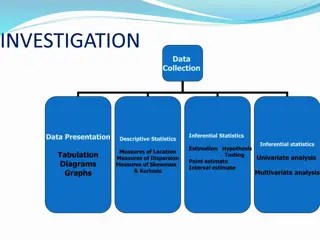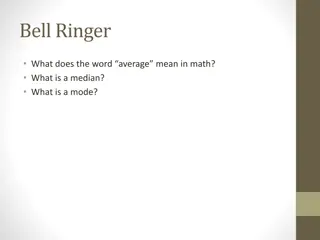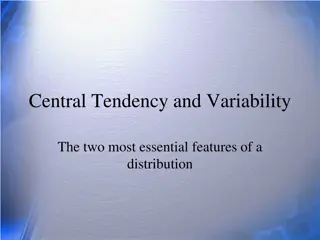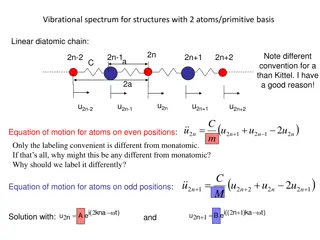
Measures of Central Tendency and Dispersion
Learn about mean, median, mode, and range in statistical analysis through practical examples like calculating bowling scores, exam grades, stock prices, and survey data on television ownership. Explore how these measures help in understanding data distribution and variability.
Download Presentation

Please find below an Image/Link to download the presentation.
The content on the website is provided AS IS for your information and personal use only. It may not be sold, licensed, or shared on other websites without obtaining consent from the author. If you encounter any issues during the download, it is possible that the publisher has removed the file from their server.
You are allowed to download the files provided on this website for personal or commercial use, subject to the condition that they are used lawfully. All files are the property of their respective owners.
The content on the website is provided AS IS for your information and personal use only. It may not be sold, licensed, or shared on other websites without obtaining consent from the author.
E N D
Presentation Transcript
12-3 Measures of Central Tendency and Dispersion
Measures of Central Tendency: Mean, Median, and Mode sum of the data values total number of data values Mean (average): Median: the middle value of a data set when the values are arranged in order Mode: the data item that occurs the most (can have none, one, or more)
Problem 1: Finding Measures of Central Tendency What are the mean, median, and mode of the bowling scores below? Bowler 1 104 Bowler 5 189 Bowler 2 117 Bowler 6 109 Bowler 3 104 Bowler 7 113 Bowler 4 136 Bowler 8 104
Problem 2: Finding a Data Value Your grades on three exams are 80, 93, and 91. What do you need on the next exam to have an average of 90 on the four exams?
Measure of Dispersion: describes how dispersed, or spread out, the values in a data set are Range of a set of data: the difference between the greatest and least data values
Problem 3: Finding the Range The closing prices, in dollars, of two stocks for the first five days in February are shown. What are the range and mean of each set of data? Use the results to compare the data. STOCK A: STOCK B: 25 34 30 28 30 31 47 36 28 31
Problem 4: Finding Measures of Central Tendency and Ranges The results of a survey on the number of televisions in students households are shown A) Calculate the mean, median, and range of the data B) How can you tell from the graph that the mean and the median are equal?
Problem 5: Comparing Measures of Central Tendency The results from the same quiz to two different classes are shown A) By comparing the line plots, how can you tell which mean is greater? B) Who has the greater median?

